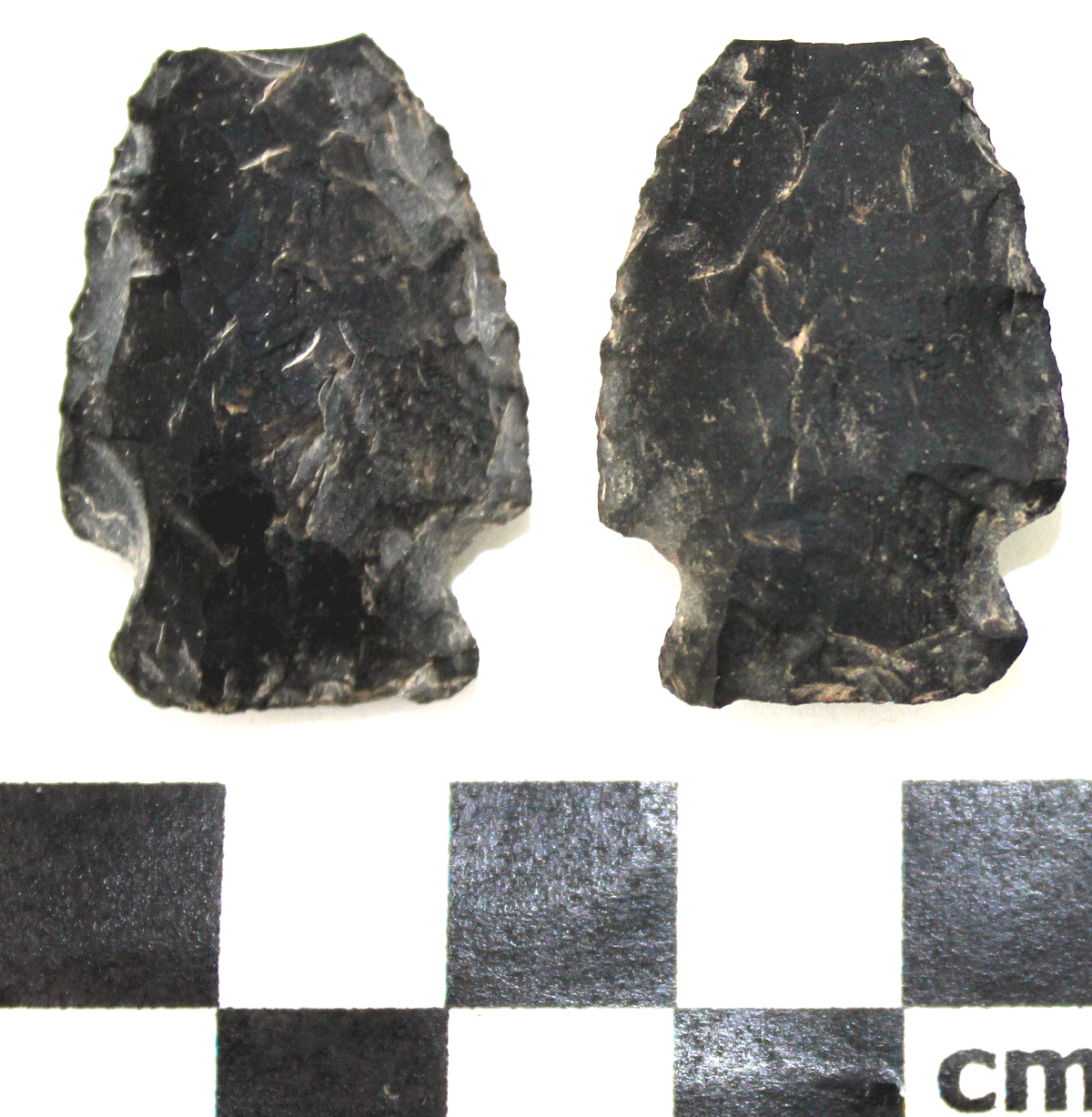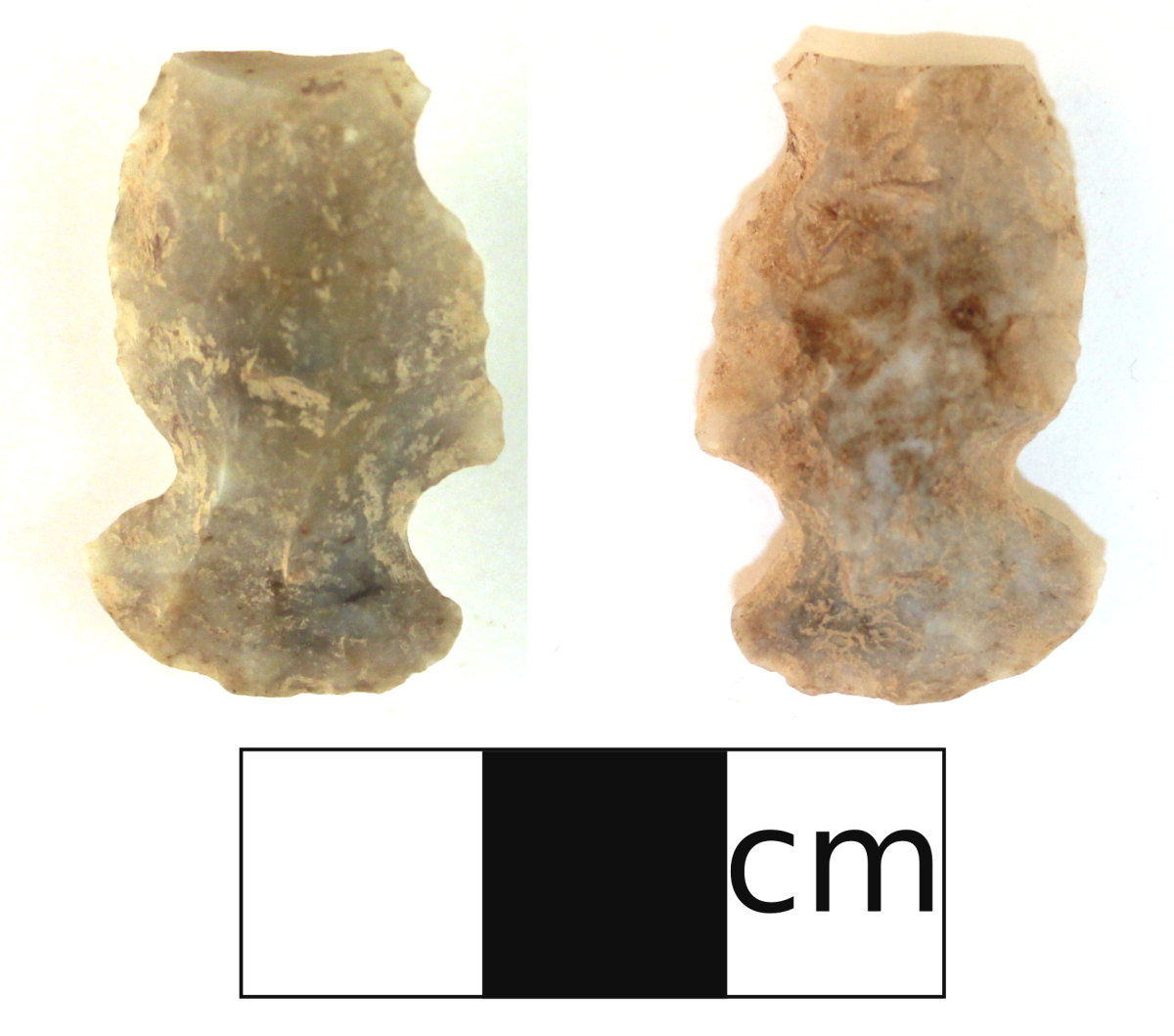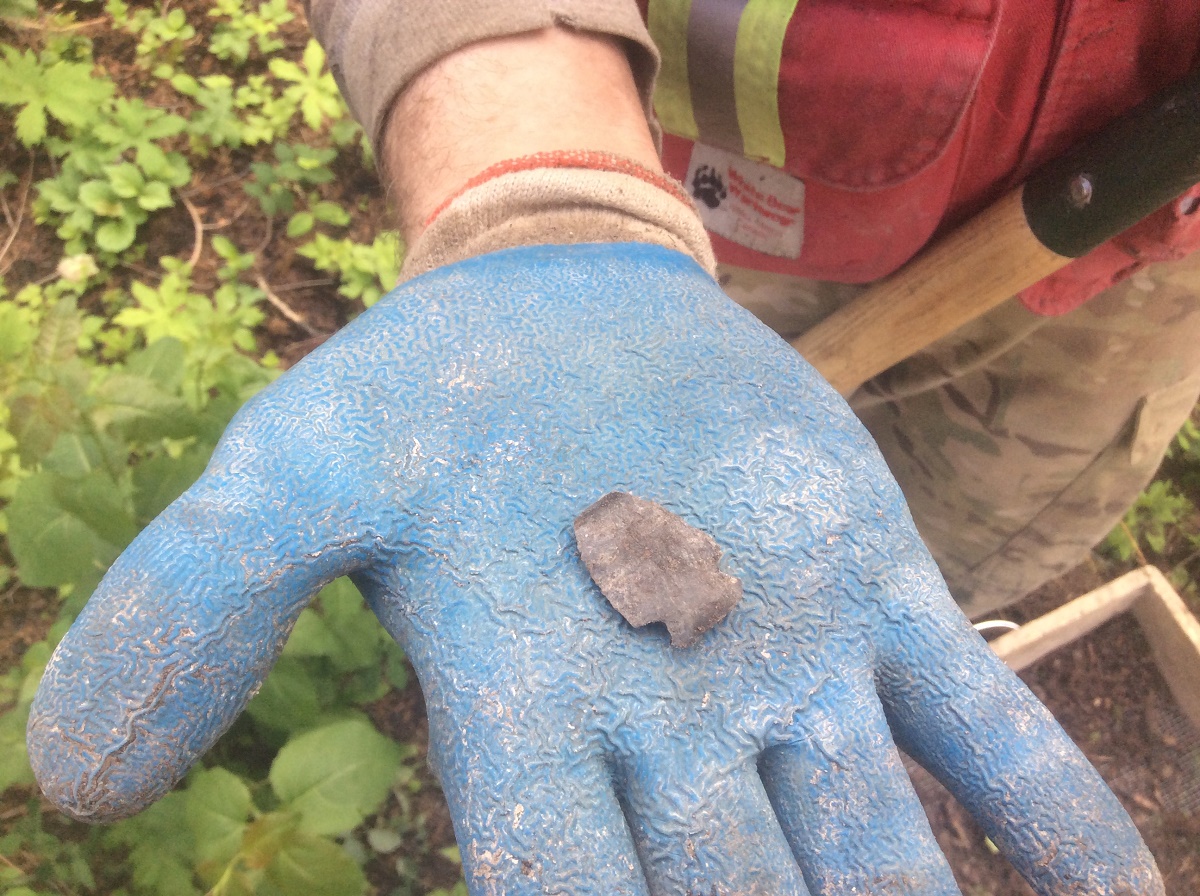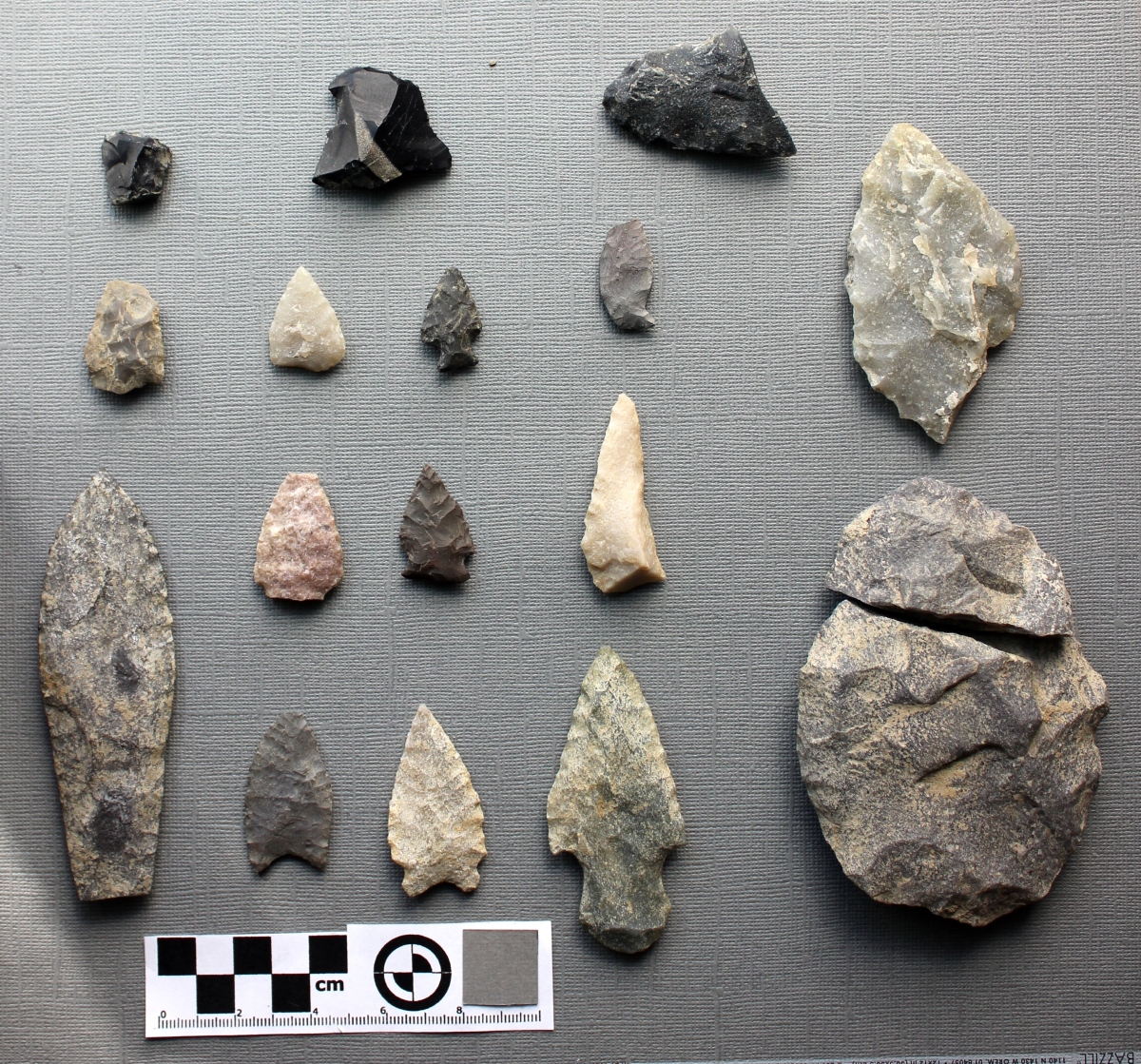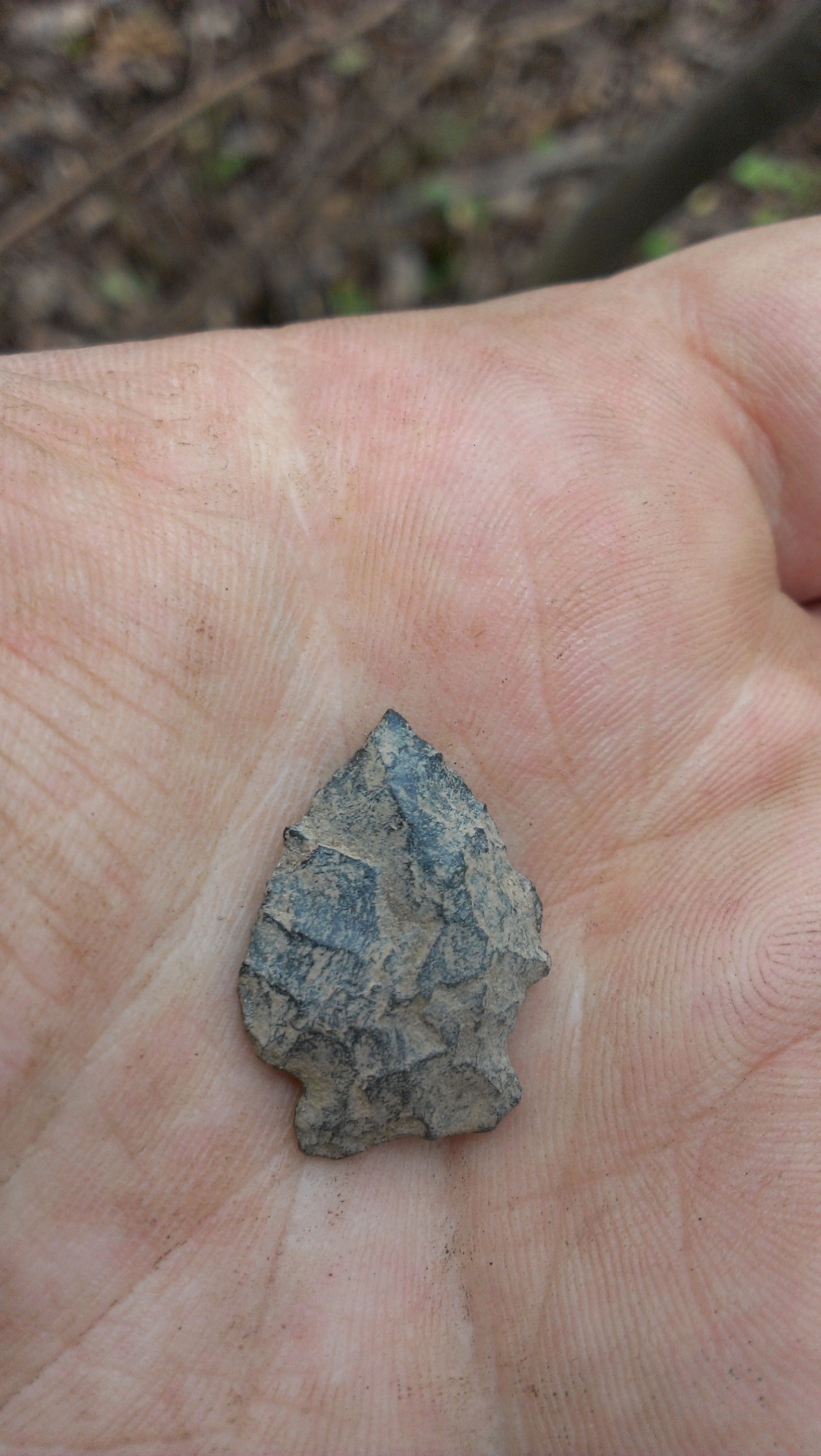Projectile points come in many shapes and sizes ranging from large paleolithic spear points to small protohistoric arrow heads to even smaller “toy arrow heads”. This artifact type is a stone that has been shaped using flint knapping techniques to create a sharp triangular and aerodynamic tip that is attached to a wooden shaft that can be propelled through the air by throwing by hand, atlatl, or bow, to hunt game. This is an important artifact type as over time the styles of points changed allowing us to use the style to estimate the time period a site was occupied. This particular point is a Besant style dart point, which dates to approximately 2,500 -1,350 BP.
Tag: arrowhead
Side-Notched Projectile Point
We often post images of beautifully crafted tools such as the besant point from FcPu-11 or the siltstone knife from Buffalo Beach but not every tool we find is a “work of art.” This week’s photograph is of an “ugly” artifact we found in 2016 when undertaking an HRIA for Sundre Forest Products. The site was found on a terrace overlooking the confluence of two tributaries to the North Saskatchewan River. The artifact is a side-notched chert projectile point similar to the Prairie or Plains side-notched typology. The point is asymmetrical with one edge being a rounded convex shape and the other an undulating edge with an angular shoulder. The tip of the point is broken off which is common of the projectile points we find and is likely the reason the point was discarded. While aesthetics can add to the function of a projectile point this artifact demonstrates it was not necessary. The idea that it doesn’t matter how it looks as long as it works was alive in the past as much as it is today.
Besant Point
Brian found this probable Besant point, about 2500 years old, doing HRIA surveys of fire-salvage cutblocks near Anzac, Alberta this week.
The Brazeau Reservoir Archaeological Survey Project
The Brazeau Reservoir Archaeological Survey is a project hosted by the Strathcona Archaeological Society, and is sponsored by Tree Time Services. It currently is centred around a large campsite and workshop on the upper valley margin at the confluence of the Brazeau and Elk Rivers, located near Drayton Valley and Rocky Mountain House.
The main site, FfPv-1, was found in 2009 by Sandy and Tom Erikson while out on a day hike. They contacted the Royal Alberta Museum to report their finds, and the site was visited by curators Jack Brink and Bob Dawe in 2013. They conducted an exploratory survey with Sandy and Tom, and found five additional sites, FfPv-2 to 6. These sites are all located around the edge of the upper water lines of the Brazeau Reservoir, and are covered by water for most of the year.
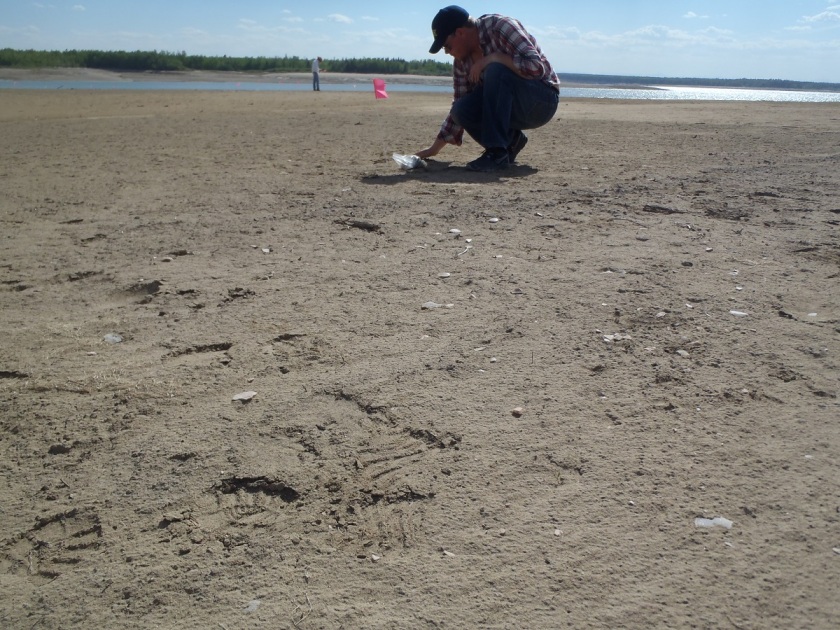
Jack and Bob brought these sites to the attention of the Strathcona Archaeological Society as an opportunity to engage with the society’s members through the practice of archaeology. What made these sites perfect to use for a volunteer project is that all the sites were identified by the artifacts found on the surface, thanks to the reservoir water that slowly stripped the soil away. This meant that volunteers could learn how to spot the artifacts sitting on the surface.
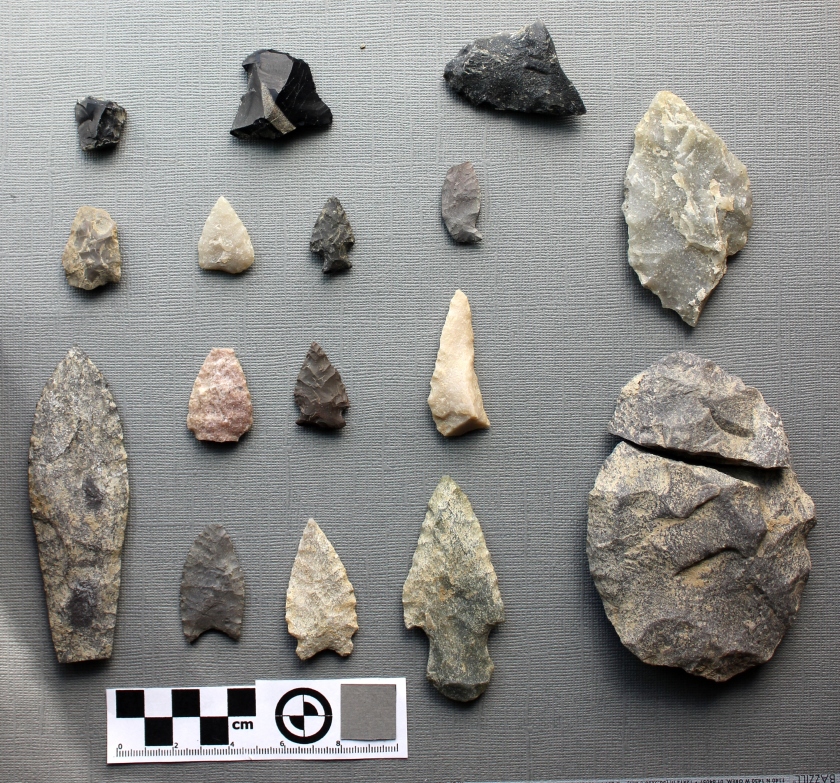
In 2015, Madeline Coleman, one of our Permit Archaeologists, co-organized the pilot volunteer project with another SAS member, Amandah van Merlin. Volunteers travelled across FfPv-1 to figure out the site’s extent, and what type of site it was. Survey of the landforms around FfPv-1 found three new sites!! Volunteers also found projectile points that crossed almost the entire expanse of Alberta Precontact history. The cultural phases represented include Clovis, Agate Basin, Hell Gap, Oxbow, and Plains Corner-notch.
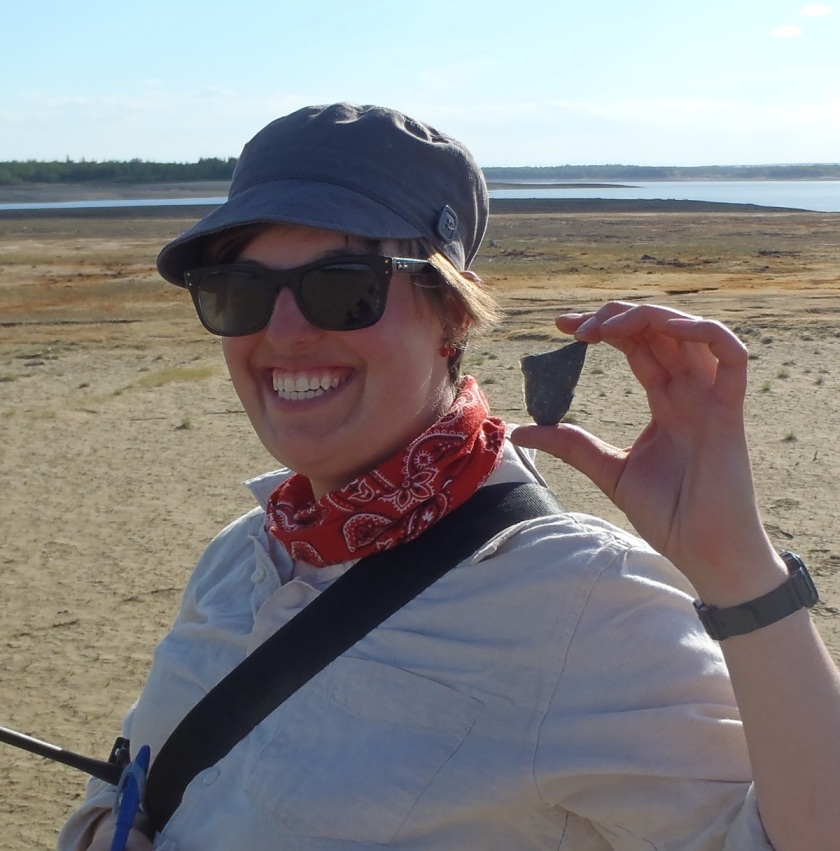
Based on the location of the sites, it is very likely that the sites are located around the whole reservoir! The construction of the reservoir began in 1910, long before developments in Alberta were examined for impacts to archaeological resources. Currently, many of the sites recently identified are only accessible by boat.
A new survey with test excavation units are planned for May 28th and 29th. To register or for more information, email Madeline at mcoleman@treetime.ca
Late Precontact Arrowhead
Today’s picture comes from the Ahai Mneh site on the shores of Lake Wabamun, west of Edmonton, AB. This archaeological site has a long history of human occupation, from earliest hints of people in Alberta using Clovis technology, right up to the Late Precontact and Historic Periods. Featured here is a Late Precontact side-notched arrowhead, made of a fine-grained black siltstone, that likely dates between 1000 to 300 years ago.

